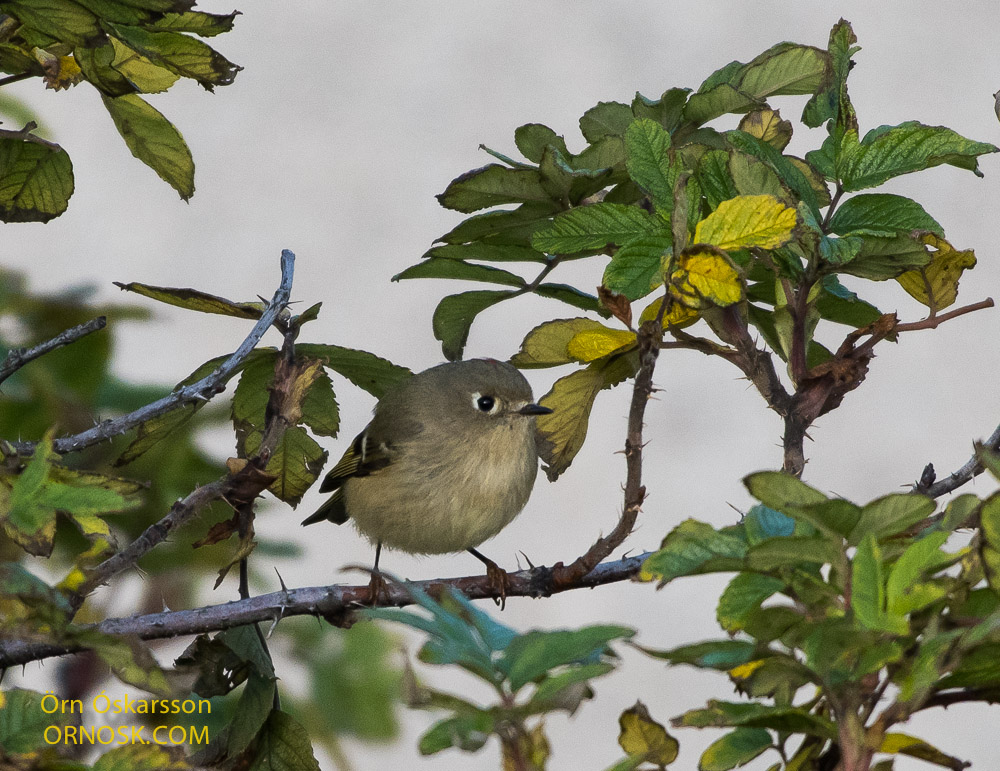
Once again a rare American vagrant was spotted in Stokkseyri. Now a Ruby-crowned Kinglet. Only two days ago a Common Yellowthroat was spotted in the same garden. This is the second time a Ruby-crowned Kinglet is seen alive in Iceland. And for the record, I was the one who spotted the first one, and was the only one to see it.
The first Ruby-crowned Kinglet was found dead in Heimaey, in the Westman Islands, in November 1987. The second one was alive and also in Heimaey. That was in October 1998 and I was the only one to see it. And now the third bird and the second one alive has been spotted, the first to be seen in the mainland.
Today the little town of Stokkseyri was teaming with birdwatchers with their cameras. Many of them saw the bird and photograped it. Very different from when I was the only one to see it in Heimaey in 1998.

The Ruby-crowned Kinglet is a common breeding bird in North America. In winter it migrates to the Southern states. It is amazing for such a small bird to be able to fly all the way to Iceland, from the east coast of North America, over the Atlantic, probably around 4000 km, all the way to Iceland.























